Most Popular
Start Routing Notifications Today!
Courier is a notification service that centralizes all of your templates and messaging channels in one place which increases visibility and reduces engineering time.
Sign-up
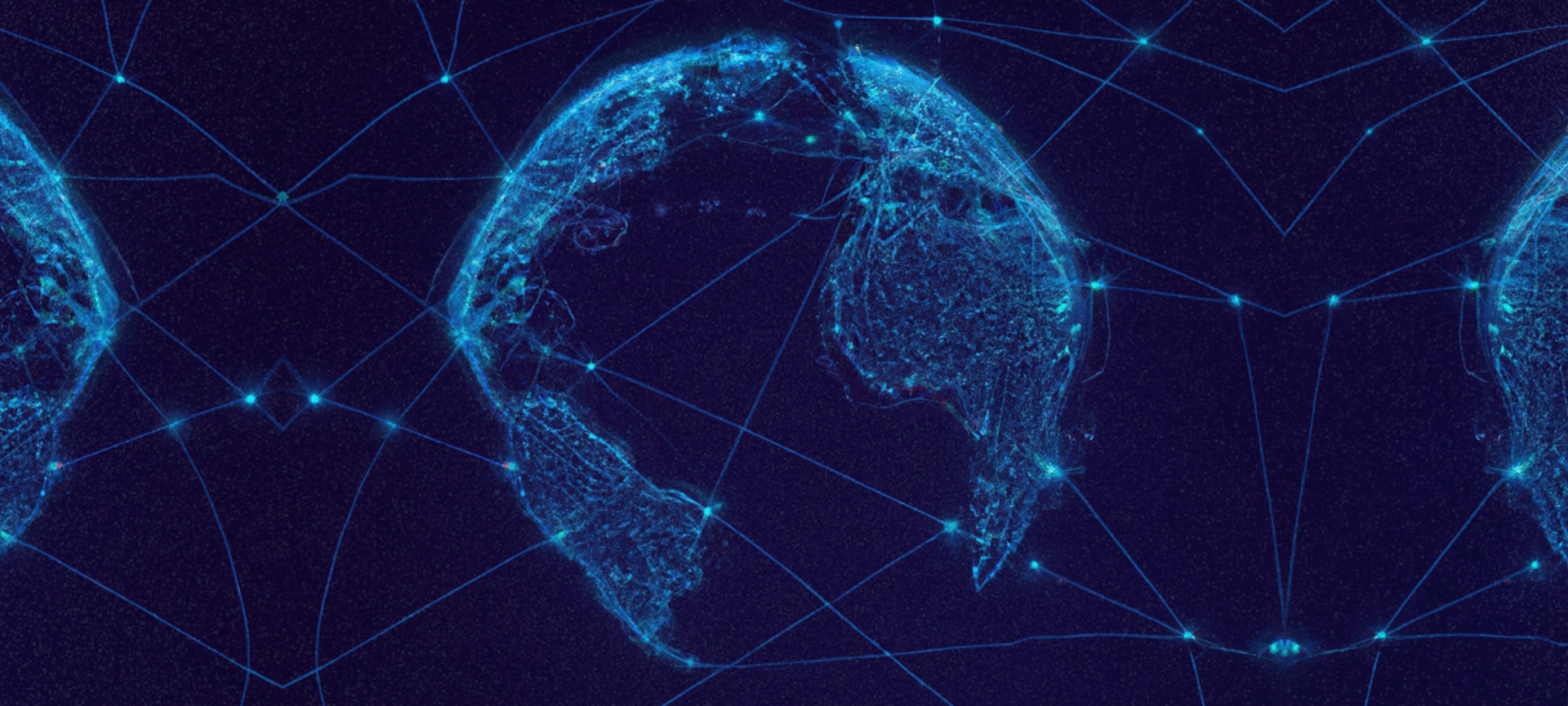
Smarter customer engagement flows with Courier’s new Segment integration
Having a clear idea how your users interact with your app — when they log in, which features they engage with, or which notifications they click on — can help you design a better experience and ultimately increase user engagement. But retracing your users’ steps across various integrations is a complex task. Customer data platforms (CDPs) like Segment seek to achieve it by aggregating event data from multiple sources in one centralized location. This helps businesses gain a clearer picture of their users, and use that insight to individualize the app experience.
How an app communicates with its users is key. Whether you’re using web and mobile push notifications, an in-app inbox, automated email and SMS messages, or Slack notifications: all of that can have a huge impact on how the app experience is perceived by your users. That’s why it’s so vital to track notification usage data in your CDP.
Today, we’re excited to announce that teams using Segment can now ingest notification usage data from Courier, so that it can serve as a basis for new insights. Which communications were successfully delivered? Which ones were opened and read? On what channels? These types of events generated in Courier can now be used to create custom user journeys.
This step completes the integration of the two services: previously, Segment was available as a data destination in Courier. Now that the integration has come full circle, let’s have a look at how your organization can benefit from combining the two tools.
Courier’s Segment integration really sealed the deal. You can simply get more understanding of the customer journey and the actions and the events that are being triggered along the usage of the product.
Pierre-Camille Hamana, CEO & Founder, Hospitable
Marrying Courier and Segment
In case you haven’t heard of us before, Courier is a notification platform that lets you develop, scale and manage multi-channel notifications for your application. Combining powerful API primitives with a no-code UI for designing and monitoring notification flows, Courier makes it far easier to build notification experiences that work in sync with your application UX than if you created a complex notification infrastructure from scratch.
Segment is a popular customer data platform (CDP) that lets you collect data generated by your users in various locations and assemble it in one place. This gives you a more complete picture of your users, allowing you to target them in a smarter and more personalized way. If your organization uses different tools to track and store user interactions, then you’re likely using a CDP like Segment.
In Segment, your users’ interactions are stored as “events,” complete with metadata that you define in advance. Events can be associated with a user’s ID, or be stored anonymously, depending on permissions. You can then retrieve them for further data analysis, like aggregating and partitioning events according to different criteria, depending on the questions you’re trying to answer.
For instance, you could be looking at general user engagement with a specific notification, announcing a new product feature. Or you could use your event data to understand how a specific group of people — for instance, 25- to 35-year-olds located in Southern Africa — engaged with your notification within a particular timespan; say, within 24 hours of sending the notification. Such information can now easily be obtained, thanks to the two-way integration of Courier and Segment.
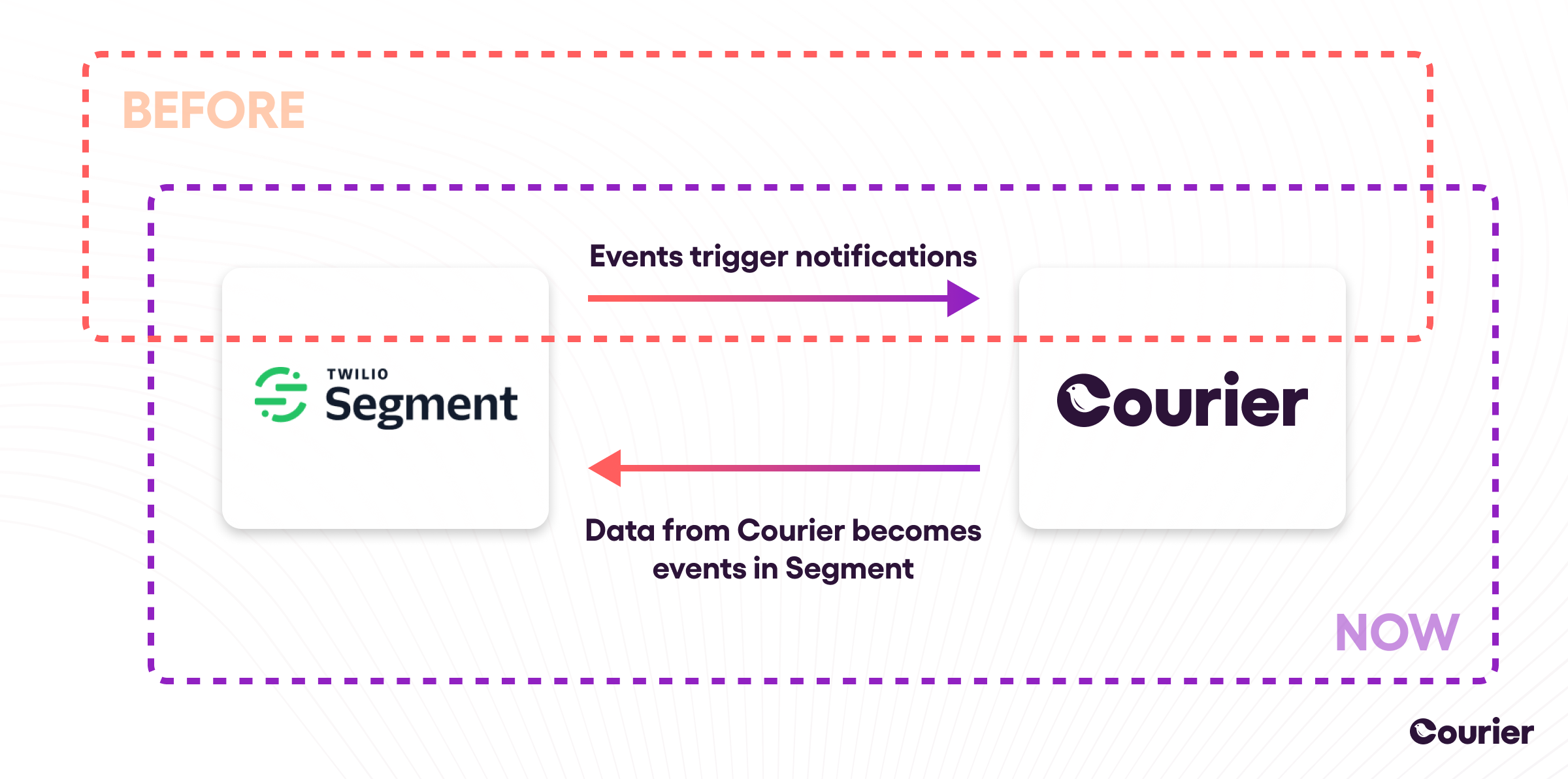
Sharing data between Courier and Segment benefits both the engineer looking to create a more organic notification experience for their users and the data analyst who wants insights into how users are interacting with a given product. The Courier Segment integration enables you to reap the full benefit of combining both tools.
Courier as a destination for Segment events
Many product teams already use Segment and Courier today. For the last two years, the Courier destination in Segment has allowed companies like Hospitable to create impactful multi-channel notification experiences. Event data tracked in Segment would flow into Courier, and trigger pre-configured notifications.
For example, you could respond to a user’s actions — such as the purchase of a particular product or a password reset request — by sending out a particular notification via an in-app inbox message, a push notification, or an email.
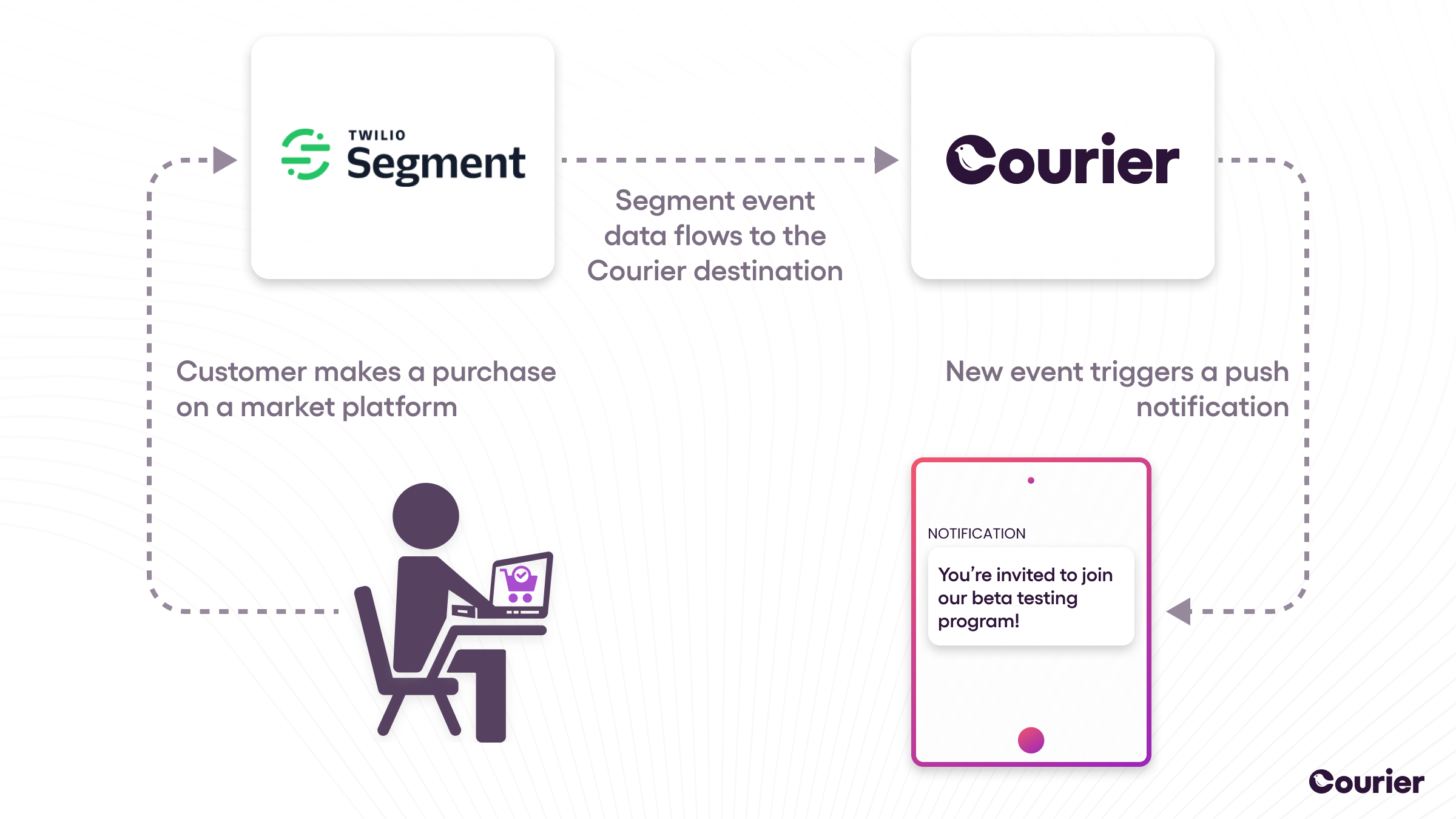
By combining Segment event data with Courier’s notification-sending abilities, teams can design a notification experience that feels personalized and tailored to the user’s product journey — with almost no engineering effort.
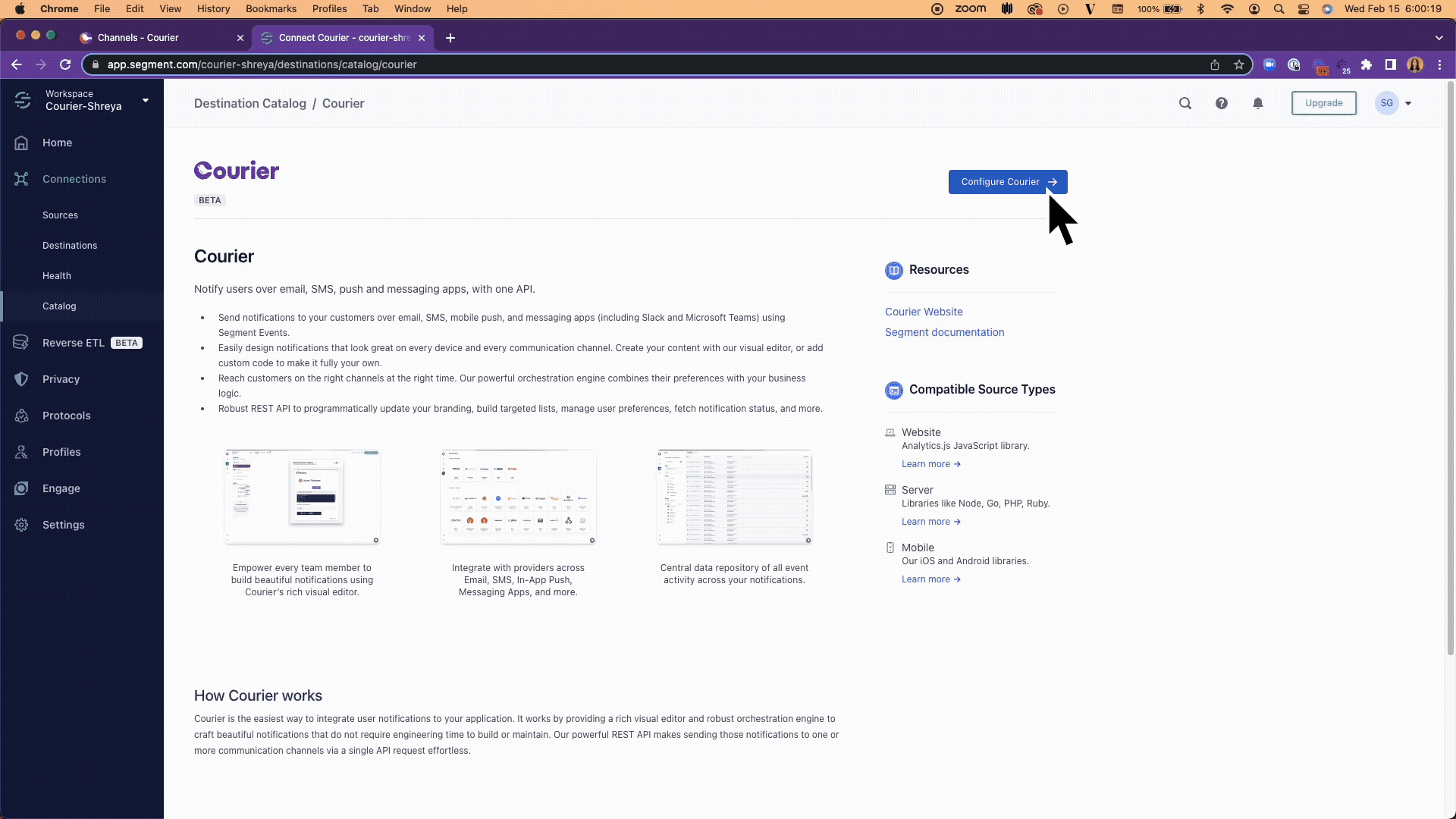
Understand your users more fully through notification data
However, when you send out a notification to your users, that in turn creates new event data. Did the user click on your notification within a certain time span? How many notifications were not delivered? What percentage of users unsubscribed? All that is extremely valuable information when trying to form a full picture of how your users engage with your product.
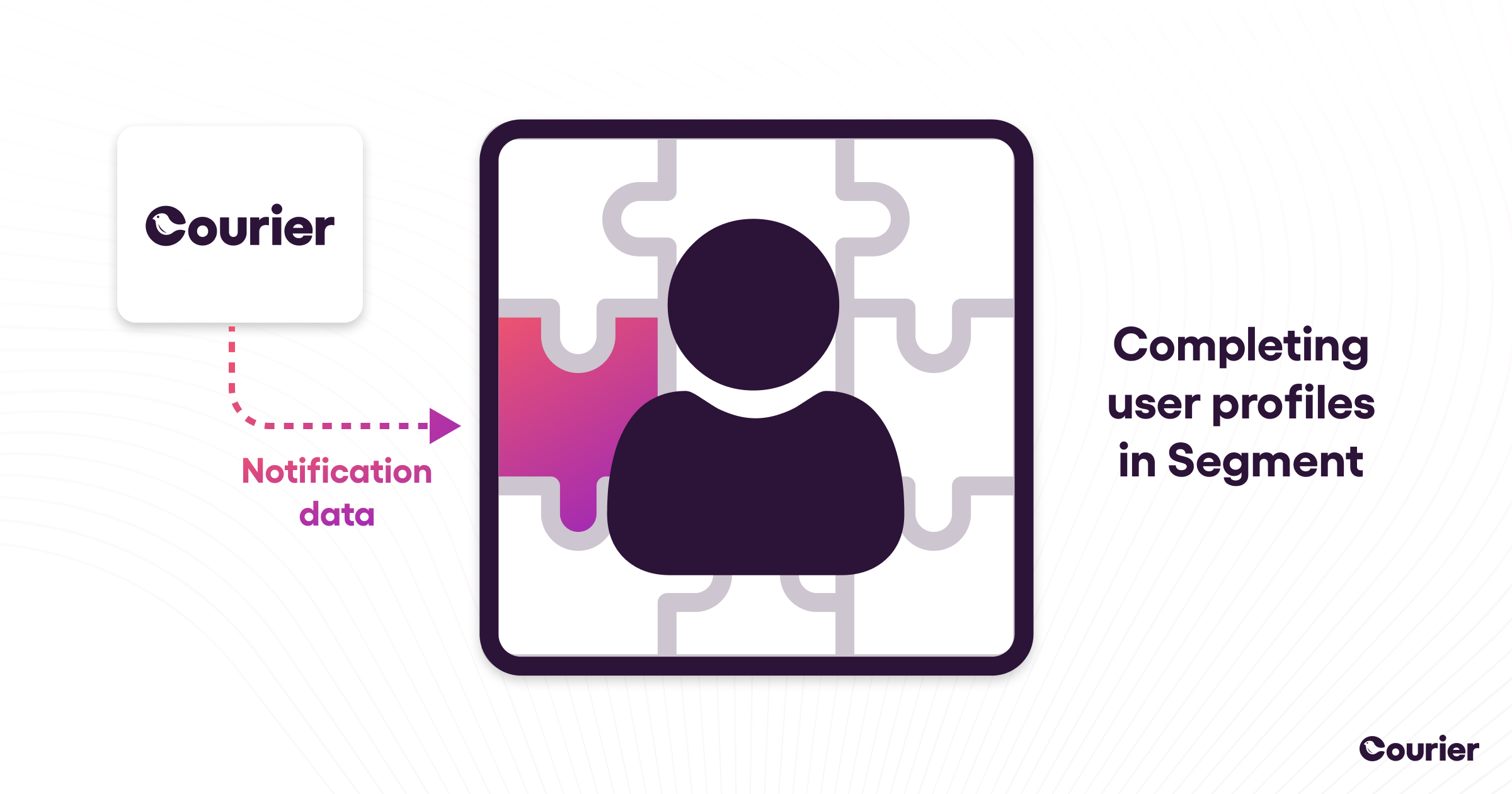
By integrating Courier as a source of events in Segment, you can now make the most of that valuable data. Simply import notification events into Segment, where you can combine them with data from other websites and apps.
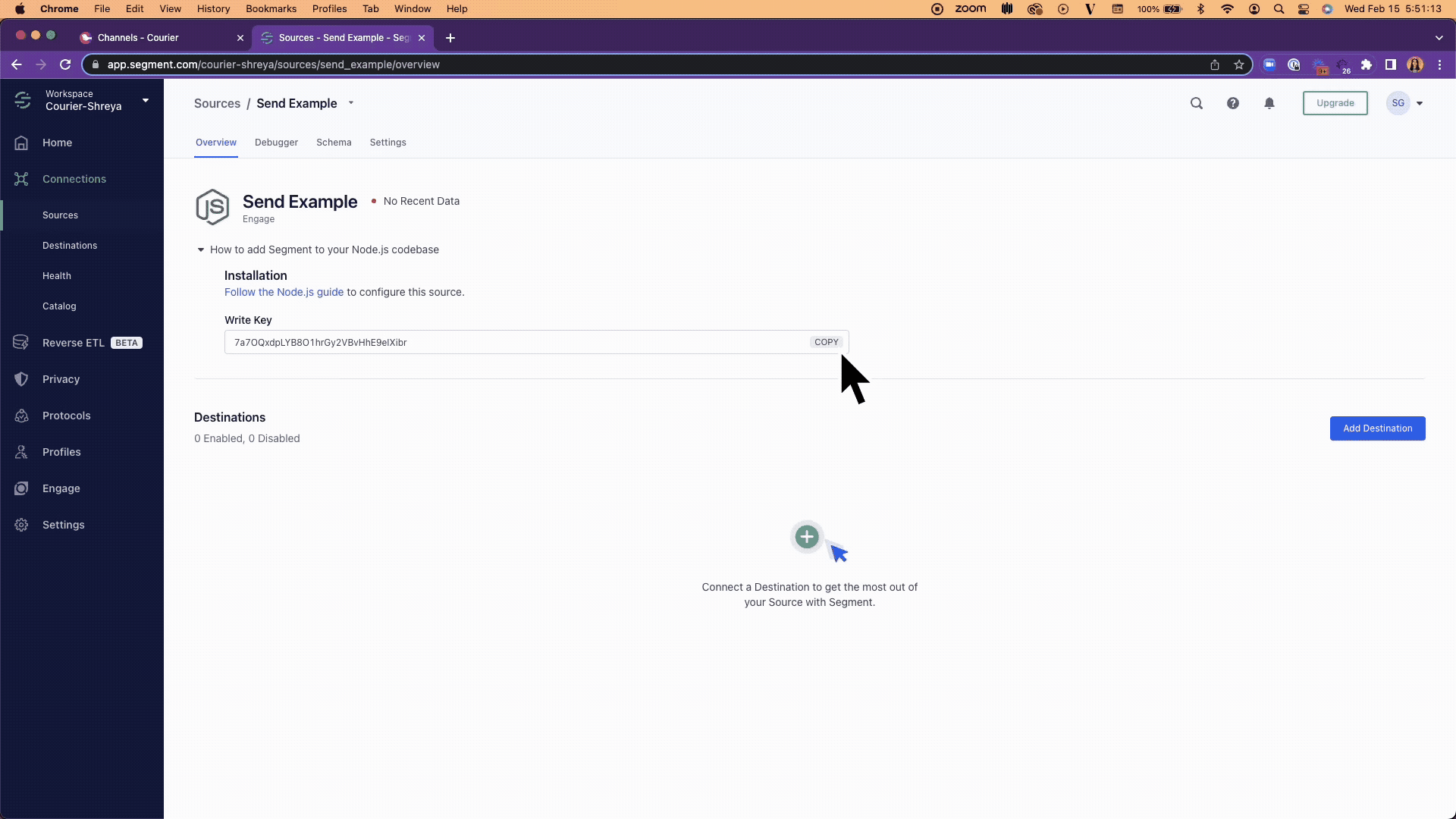
Once connected, Courier can send two types of user data to Segment: message events and audience events.
Message events
Message events are related to deliverability of your notifications, as well as how your users engage with them. Whether a message was sent, delivered, clicked, and opened: all of that can be observed via message events.
By combining these events with other data, you can gain valuable insights. Let’s say, for example, that users in a certain region seem to engage less with messages that are sent at a specific time of day. You can now experiment with different sending times, and see whether that increases metrics such as the open rate. Or perhaps the notification title doesn’t work as well for certain audiences? You can tweak it and see if that improves user engagement.
Audience events
Audiences are Courier’s dynamically defined user groups, which are more flexible than static lists. For instance, you can define an audience that is located in the US. When a user from that audience travels abroad and their profile is updated, they will automatically be removed from the US audience based on their updated location. That will, for example, affect the times at which they receive a message — so you can make sure that nobody is woken up by an email trying to sell them a product, or similar disruptive behavior.
Once your message and audience events are in Segment, you can aggregate and view them to gain insights, or route them to an analytics destination like Tableau or Looker. Thanks to the Segment integration, you’re now able to perform analytics on your notification data, and gain powerful insights about your users’ journey. Having a clearer understanding of how your users engage with your messages will help you create even more delightful notification experiences.
Get started
The Courier Segment integration is available now to all users. Read the docs to get started. For those already using Courier as a destination for Segment events, setting up Courier as a data source is simple. You can add Courier as a data source by wiring up your Segment write key.
By making Courier available as a source in Segment, we’re getting one step closer to a full understanding of your users’ actions and motivations. Try it out today!
Start Routing Notifications Today!
Courier is a notification service that centralizes all of your templates and messaging channels in one place which increases visibility and reduces engineering time.
Sign-up
More from Product News
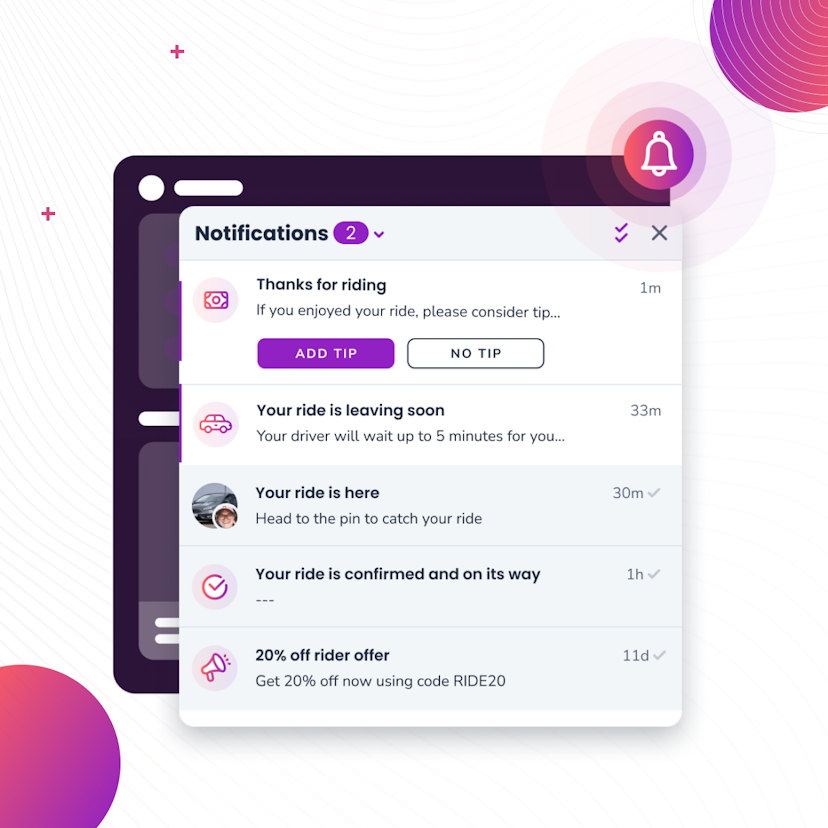
Courier Inbox for web and mobile, a complete notification center
A notification center inside of web and mobile apps is now an expectation. It’s a way to reach specific audiences or users with tailored messages and a way to boost engagement by bringing people back into the app. While Courier has been adding Inbox capabilities over the last couple years, we’re excited to announce a complete set of SDKs that span web and mobile. You can drop in a full-featured inbox to give your users a best-in-class notification center inside your app that works seamlessly with your existing notification flows.
Donnie Wang
June 14, 2023
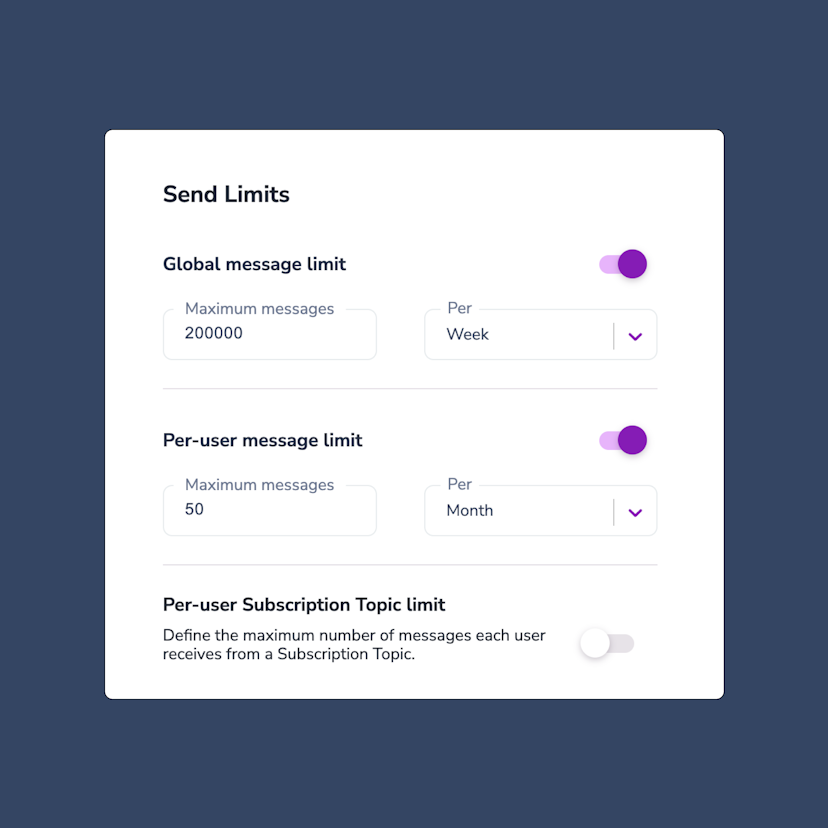
Controlling notification send limits in Courier
Send limits are a new addition to the Courier app that allow you to manage notification rate limits. This means you can set a maximum limit on the number of notifications you can send over a certain time period. The advantages of using send limits are twofold: you can save money by imposing spending caps on notifications, and you can improve the customer experience of your app by avoiding bombarding users with too many notifications at once. Send limits can be applied in a variety of ways, including system-wide notification limits, as well as specific limits for individual users or notification topics. For instance, you can set an overall limit of 200,000 notifications per week. This article will explore the various types of notification rate limits available, explain when send limits are useful, and provide guidance on how to set them up.
Jason Axtell
May 16, 2023
Free Tools
Comparison Guides
Build your first notification in minutes
Send up to 10,000 notifications every month, for free.
Get started for free
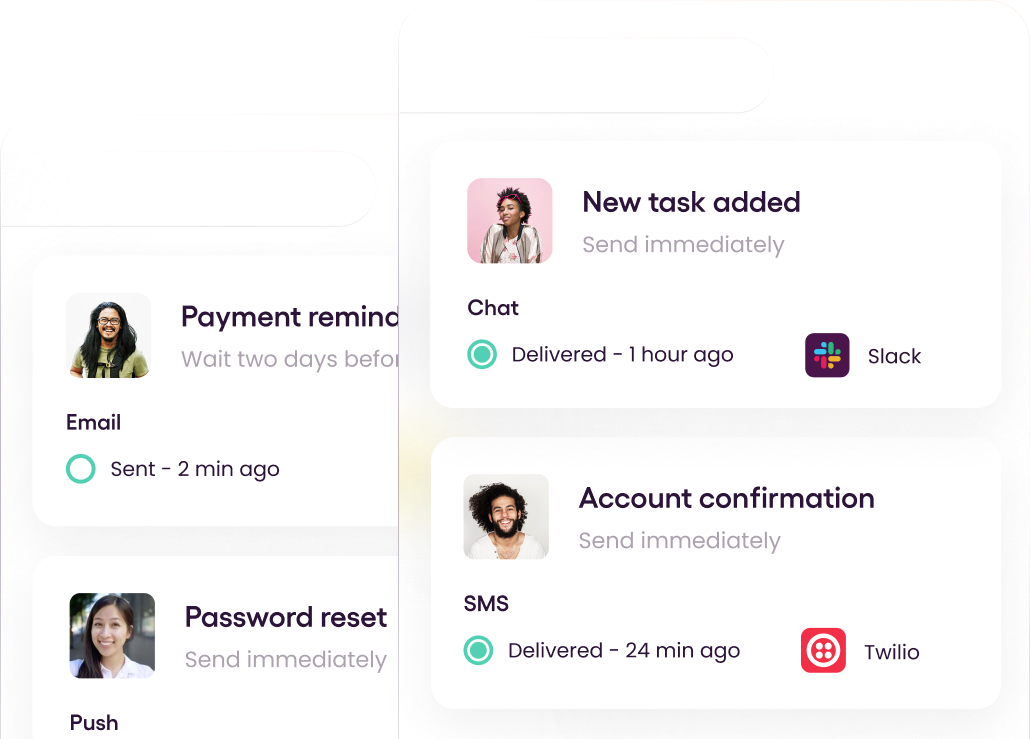
Build your first notification in minutes
Send up to 10,000 notifications every month, for free.
Get started for free

© 2024 Courier. All rights reserved.